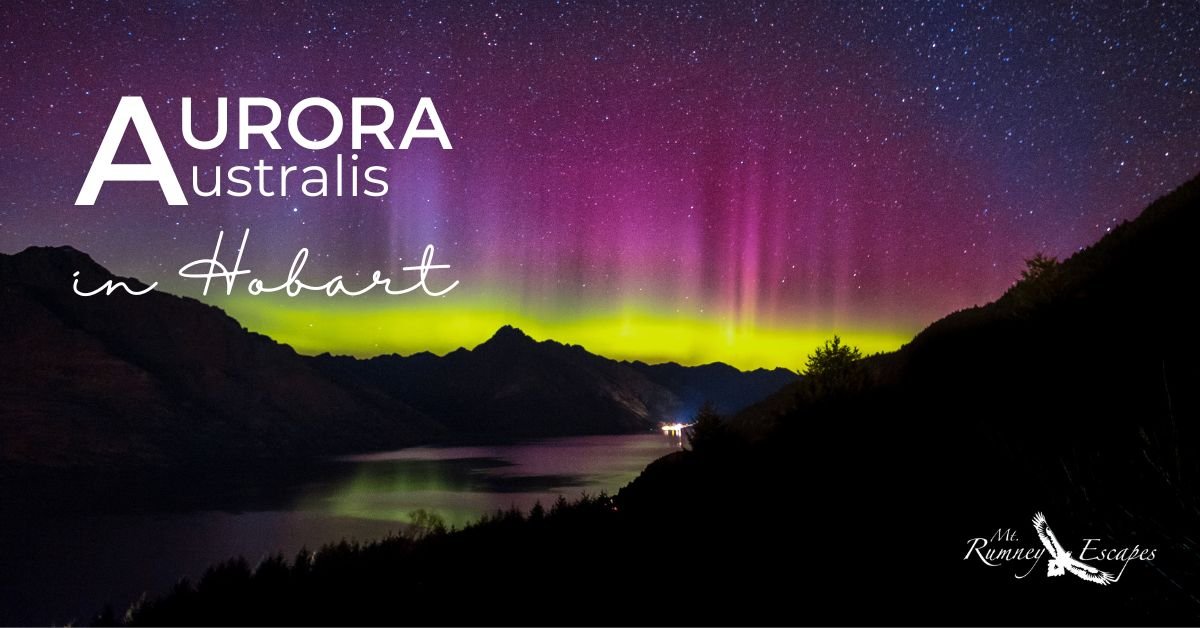The Aurora Australis, also known as the Southern Lights, can be seen from many locations around Tasmania. This natural phenomenon is an array of dancing lights across the sky.
This natural light show happens when the sun releases a massive burst of solar wind and magnetic fields into space, known as a coronal mass ejection. Auroras are produced when the particles of these solar winds and the earth’s magnetic field collide. Therefore, Tasmania is an ideal place to view these Southern lights given the earth’s magnetic field is closest to its surface which is the South Pole. The atoms bring various colours forth, green and red representing oxygen, and nitrogen reflected in green and blue.
You can find some groups about the Southern Lights on Facebook, one we recommend is this one https://www.facebook.com/groups/auroraaustralis/
What Should You Know about Aurora Australis
Both Aurora Australis and Aurora Borealis come from the same origin. These Auroras exist as a result of a solar wind that is created when fully charged particles have burst from the sun. Since the solar wind is drawn on both the North and South Poles, it produces a natural light show, which we are all very fond of today.
We will often witness nature’s parade of lights during the winter since night falls earlier. And this also means that from Tasmania, the Aurora Australis can be seen all year round.
To witness the Southern Lights, it would be great to go down south, but any part of Tasmania will do too. You can see the Aurora Australis as it flaunts its beauty even if you are just around Hobart CBD. All you need to do is find a location that’s away from artificial light and has a vast horizon.
If you want to get closer to the Southern Lights, you may opt to climb up Mount Wellington. However, it could be a bit chilly up there.
Regardless if you are in Hobart or the southern part of Tasmania, make sure you take a picture as you witness a memorable scene that is about to happen.
Can you see the Aurora with your eyes?
The simplest answer to that is no. That is because our naked eyes struggle to see the relatively “faint” colours of the Aurora at night.
Our eyes have cones and rods – the cones work during the day, and the rods work at night. But, some folks claim that they can see many colours during an Aurora display and that very well may be the case for them.
Read this article by Futurism and find out more about the difference between using your camera versus your naked eyes when watching the Aurora.
https://www.futurism.com/how-we-see-the-aurora-borealis-camera-vs-human-eyes-2
How to capture Aurora Australis?
This is the bit where those of us who stick to auto on our cameras need to get brave. The first thing to do is to set your camera to manual.
If you’re serious about capturing a decent Aurora image, you’ll also need a tripod, an SLR camera and a remote so that there’s no movement affecting your Southern Lights showstopper.
The lens needs to be as wide as possible, and the same goes for the aperture. This allows maximum light into the camera (lowest f-stop, around f/2.8 to f/4) is a good guide. Opt for your camera’s highest ISO (800 to 3200 is a good starting point) and a shutter speed of anywhere from 5 to 15 seconds. Lastly, set your focus to infinity, and you’re set to capture the dance.
To find out more, you can head over to:
https://www.discovertasmania.com.au/about/articles/2019/southern-lights
http://www.aurora-service.net/aurora-school/how-to-photograph-the-aurora/

